Last Updated on April 12, 2024 by Eric Cantu
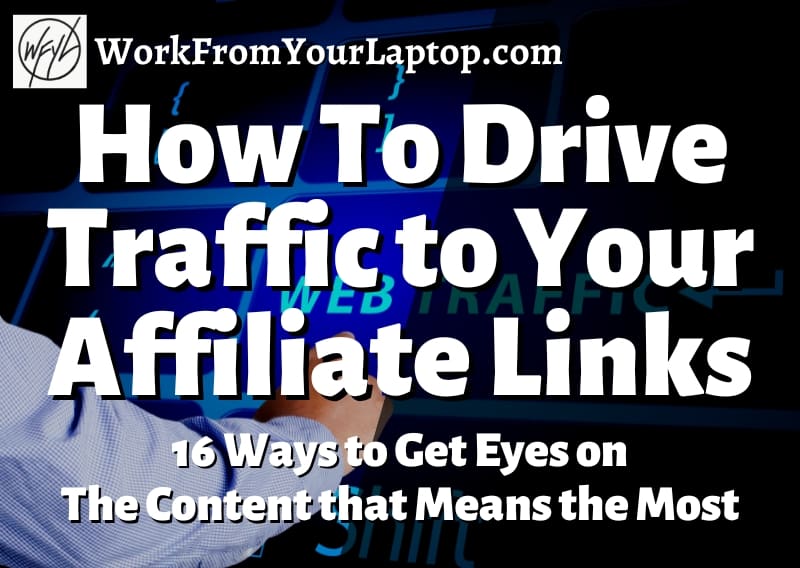
Understanding how to get traffic to your affiliate links is absolutely crucial to your success in monetizing your blog. And it’s not just about traffic, it’s about getting the right traffic. Let’s dive in and show you how to create people-first content that converts.
How to Get Traffic to My Affiliate Links?
To drive traffic to your affiliate links, hook your audience with ultra-engaging content, be smart with how you use social media and email marketing, and always keep your game fresh based on your audience’s needs.
Key Takeaways
- Content is Your Best Friend: Create awesome content that people love and want to share. If they dig it, they’ll click your affiliate links.
- Trust is Everything: Build trust with your audience by being honest and reliable. If they trust you, they’re more likely to take your recommendations.
- Quality Over Quantity in Posts: Don’t just churn out content; make sure every piece is something your readers find super useful and interesting.
- Social Media Savvy: Choose the right platforms, post cool stuff, and chat with your followers. It’s about making genuine connections.
- Email Marketing Works Wonders: A great email list is like gold. Keep your subscribers hooked with great content and they’ll keep coming back for more.

Training That Delivers!
• Turn your own niche website into revenue
• Step by step training, tools, & support
• Your own AI powered Business Hub
• Get me as your support coach!
• Free test drive to see if it’s a good fit!
Content is King: Crafting Quality Posts
If you want to drive traffic to your affiliate marketing links, your focus has to be on creating value-packed, informative content. This is non-negotiable. Each piece of content you create needs to resonate with your audience and give them information they can’t just find anywhere else.
Keywords are key: Understanding keyword research is a really important part of the game. But you can’t be stuffing your posts with them. Instead, weave them into your content naturally. This way, you’re not only keeping search engines happy, but you’re also creating a much better experience for your readers. I use Jaaxy as my go-to keyword research tool.
Be original and authentic: Being original and authentic isn’t just good advice; it’s a cornerstone of your affiliate marketing strategy. People are drawn to content that speaks to them on a personal level, that tells a story, or solves a problem they’ve been struggling with. That’s the kind of material that earns shares, backlinks, and, ultimately, traffic.
Don’t forget about multimedia: Your audience loves visuals! Including multimedia elements like images, YouTube videos, and infographics not only breaks up text but also makes your content much more engaging and shareable. Visuals help illustrate your points, cater to different learning styles, and will significantly increase the time visitors spend on your site.
Build trust: High-quality content builds trust and authority. And think about it, people who trust your content are much more likely to click your affiliate links. This quality-first approach is the ticket to not just better search engine rankings but to establishing a loyal audience that values what you have to say.
Leveraging Social Media Channels

Social media can be a powerful tool for funneling traffic to your affiliate marketing links. It’s about choosing the right platforms where your target audience hangs out. Whether it’s Instagram, Facebook, Twitter, or LinkedIn, the key is to be where your potential customers are most active.
You don’t have to be everywhere at once: If social media really isn’t your thing, don’t worry. You don’t have to suddenly be an influencer with your face all over the web. Even if you do love social media, it’s a smart idea to focus on one or two platforms. Choose the ones you enjoy using the most and start there.
Creating a valuable content strategy: Once you’ve pinpointed the platforms, it’s time to build a strong presence. This means more than just setting up a profile. You need to create content that encourages interaction, joins conversations, and builds a community. Share tips, insights, or how-to guides related to your affiliate products, and always be ready to engage with your followers.
Get trendy with hashtags: Hashtags and social media trends play a big role too. They’re like a beacon that signals to users what’s popular or trending. By tapping into relevant trends and using the right hashtags, you can greatly improve your content’s discoverability.
Always reply!: Your social media strategy needs to include engaging with the followers who comment on your posts or message you directly. Prompt responses and replies build trust and show that you’re building a brand that cares. A strong relationship with your followers will absolutely make them more likely to click on your affiliate links.
Don’t be spammy: Too much self-promotion can be off-putting. Instead, introduce your links contextually within valuable content or as part of a larger discussion. And don’t just share your own stuff. Share other links you find interesting or valuable. This will make a big difference on your audience see your posts as valuable instead of just self promotion.
Email Marketing: The Direct Line to Your Audience
Email marketing can be an affiliate marketer’s secret weapon. It offers you a direct line to the inboxes of the people who are already interested in what you have to say.
Get targeted: You have to focus on building a targeted email list. This isn’t just about adding numbers, but about gathering people who genuinely care about your niche and will engage with the content you share. Provide value in exchange for the sign-up, maybe through a free ebook, discount codes, or a cool newsletters, and the sign-ups will definitely follow.
Stay on top of your campaigns: Once you have their attention, it’s crucial to keep them interested with compelling email campaigns. This could include personalized product recommendations they’ll benefit from, highly informative articles, or insider tips and tricks related to your niche. Remember, personalization will significantly boost your open rates, so try segmenting your list based on interest, purchasing behavior, or how they signed up.
Quality over quantity: Don’t worry too much about sending too many emails, but do focus on quality over quantity. It’s about finding that sweet spot where you’re staying in the front of their mind without overcrowding their inbox. To measure your success, keep an eye on open rates, click-through rates, and conversion rates. This data will guide your future strategies.
And now let’s take a jump into paid advertising. In the next section, you’ll learn to complement your organic efforts with paid traffic for an even greater impact on your affiliate marketing campaigns.
Related Article at WorkFromYourLaptop.com!
Check out “Is AWeber Legit?” and see how AWeber stacks up as an email marketing platform!
Venturing Into Paid Ads
You can’t jump into paid ads too early. You need to already understand a little bit of what works and what doesn’t so you don’t just create a money pit. Let’s talk about how to use paid ads to drive traffic to your affiliate links in a smart way without breaking the bank.
Start slow: If you have content that you want to pay to get to the top of the search results pages with remember to be patient. Platforms like Google Ads can sometimes get your audience out to a segment of your audience that’s not as highly interested in your niche as you’d like. This can lead to clicks without conversions, so game plan for that and start slow before you blow through your budget.
Double down on social media content that worked: Have a post that got really good engagement on social media? Why not boost it to get a greater reach? The analytics built into boosted posts will help you see what works and what doesn’t.
Always adapt: The digital landscape is always evolving and so should your strategies. Don’t get stagnant! Regularly review and refine your content, adjusting to what the analytics say, and advertising methods are what will set you apart in the competitive affiliate marketing field.
Be ready to pivot!: Keep your finger on thes pulse of emerging trends and search engine updates. Don’t be afraid to pivot your approach in response to new insights via analytics or changes in your audience’s behavior. Your flexibility and willingness to adapt can make a huge difference in sustaining and growing your audience over time.
Want training that delivers? Check out my detailed review and full walkthrough of the affiliate marketing training platform I owe all my success to! The training is straightforward, affordable, and you can test drive it first to see if it’s a good fit. Click here to check out my full review!
Final Thoughts
It’s all about connecting authentically with your audience. Keep your content fresh, engage actively on social media, personalize your emails, and stay adaptable. Do it right, and you’ll see not just traffic, but trust and conversions flowing to your affiliate links.
What do you think? Have you had a difficult time in the past getting traffic to your affiliate links? What are the main hurdles you’ve had in doing so? Let me know in the comments section below! I’d love to hear your perspective and I always reply!
Frequently Asked Questions
What’s the Key to Successful Affiliate Marketing?
The key lies in promoting products you genuinely believe in to an audience that trusts you. It’s all about making the right match between what you share and what your followers need.
How Can I Create Content That Drives Traffic to My Links?
Focus on crafting content that’s both informative and engaging. It’s not just about plugging in links; it’s about providing real value that naturally leads to your affiliate products.
Why Is Social Media Important for Affiliate Marketing?
Social media is huge because it’s where you can interact with your audience in real-time. Share useful content, engage in conversations, and subtly weave in your affiliate links.
How Effective Is Email Marketing for Affiliate Traffic?
Super effective! With email marketing, you’re talking directly to people who already like what you do. Keep them interested with personalized content and they’ll keep clicking those links.
What Should I Keep in Mind While Using Affiliate Links?
Always aim for a natural fit. Your links should feel like a helpful resource, not just a sales pitch. It’s about balancing promotion with genuine help.
Recent Posts
- SEO vs PPC: Which is More Effective in 2024? Numbers Don’t Lie!
- How the 2024 Google HCU Has Impacted SEO – Strategies for Recovery
- Is SEO a Waste of Time and Money in 2024?
- Common Mistakes To Avoid In Affiliate Marketing
- How To Drive Traffic To Your Affiliate Marketing Links
- 16 Beginner Blogging Mistakes And How To Avoid Them
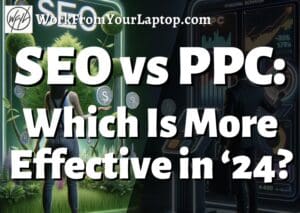


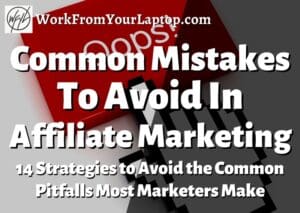
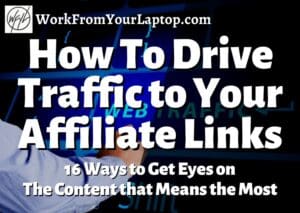
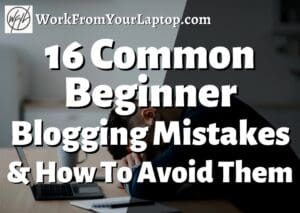
Hi Eric, I didn’t start using social media to promote my articles right away, and I see that was a mistake. Lately, I have been working on that more and I look forward to seeing how it is going to go. I agree that quality should be always before quantity to give the best to your readers. Speaking of that, is there a number of blog posts per week that is too low/high for optimal results? Also, what would be a good amount of Facebook posts per week for engagement?
Btw, while I was reading your article I came up with some ideas of what to share with my readers. Thank you for that!
Dan
2-3 blog posts per week is a good consistent number to shoot for. And with your social media shares, share you posts, but then also share other quality content that’s not your own so you have a good balance of value you’re sharing. Thanks for the comment!
Social media is one of the best ways I’ve been using to start. To be specific, reels can easily go viral and change your business. Thanks for sharing. What email marketing tools do you use? Have you ever used reels for driving content to your links? I don’t know if you can do that directly with instagram. Thanks again!
Reels can be great, but they won’t drive any traffic to your affiliate links specifically. You can use instagram and YouTube do build your reach for sure, though. I don’t do much email marketing, but I’m really going to build that up very soon. I use AWeber. Thanks for the comment!